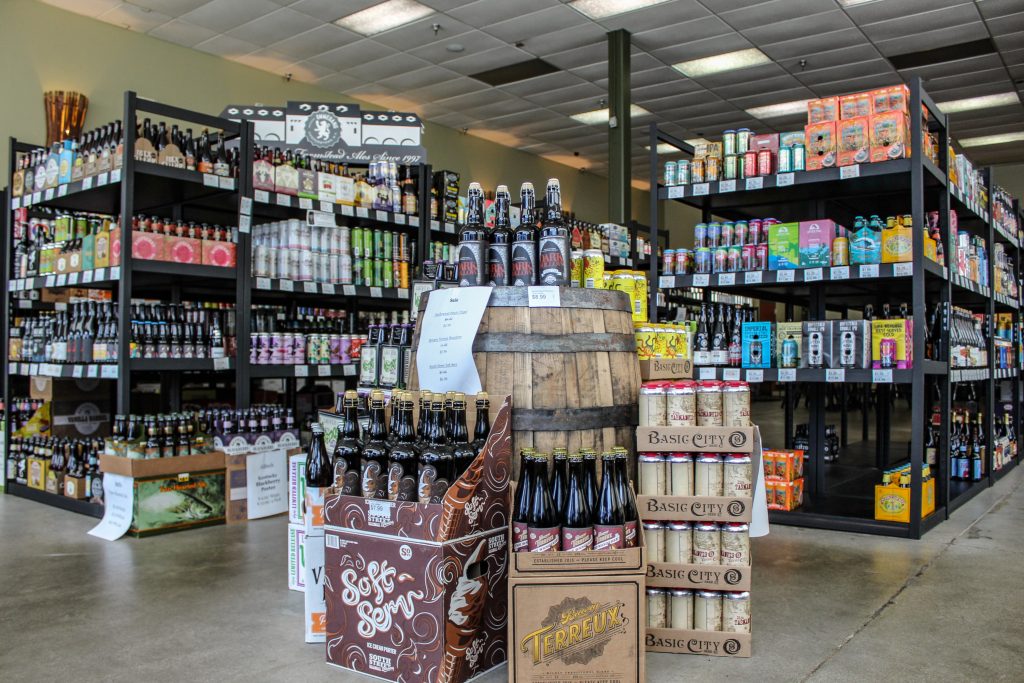
By: Becky Garrison
How did Colin Schilling go from making cider in his teens to operating Schilling Hard Cider, the second-largest cidery in the United States? According to Emily Ritchie, executive director of the Northwest Cider Association, it’s a smart business. “That, combined with a passion for cider, has enabled them to be one of the top cider producers in the country! They’re pushing boundaries and finding shelf space for the cider category. They’re helping to lift all ships in the rising tide,” she notes.
When asked about the inspiration behind his innovative cider portfolio, Colin Schilling points to his great-grandfather. In 1881, August Schilling founded the Schilling Spice Company in San Francisco, where he became known for products that put quality over a lower price point.
Schilling grew up with cider in his blood. In the 1970s, his parents carried on this family craft tradition by pressing and making small-scale cider on their farm in rural Idaho. While he started making cider when he was 14 years old and continued homebrewing during his college days, Schilling says he never envisioned a future as a cidermaker.
Then, after a five-month stint with Microsoft, he noticed how Angry Orchard kept trending in a direction that pointed to a growing interest in ciders. In Schilling’s estimation, his cider tasted better than other ciders on the market. So he convinced his friend, Mark Kornei, to join him on a new venture. They both quit their corporate jobs and launched the cidery, with Colin taking on the title of CEO and master cidermaker and Mark assuming the role of CFO.
By November 2012, they had developed their initial concept for their cidery and filed their LLC papers the following month. At the start of the new year, they moved into a 30,000-square-foot facility south of Seattle in Auburn, with their first sales in April. Initially, raw apples were processed into juice, which was completed in Yakima in Eastern Washington, and then the juice was trucked to Auburn. They also employed a local cannery that filled and seamed their cans.
Pushing the Boundaries of Cidermaking
From the cidery’s inception, Schilling has wanted to continue his family’s commitment to craft while pushing the boundaries of what he envisions as a cidermaker. Over the years, he has maintained a commitment to producing a craft cider that fits the definition of cider in the United States. Hence, 51 percent of the apple base in all Schilling ciders is made with 100 percent fresh-pressed apples. “At its core, cider is good quality apples. Then from there, the world’s your oyster,” Schilling reflects.
Canned Cider Pioneers
Schilling proclaims they were a pioneer in producing cider in cans instead of bottles. When they started Schilling Hard Cider, ciders sold in the US were in bottles. But Schilling believed cans represented a far more sustainable way to package a beverage product. So, even though ciders had not previously been sold in cans, they committed to more sustainable practices on the assumption that canned ciders would also be popular.
After California voters passed Proposition 65 (The Safe Drinking Water and Toxic Enforcement Act) in 1986, the composition of canned liners changed from an epoxy base that contained trace amounts of BPA to 100 percent BPA-free cans. Schilling was able to access a canning process that was safer for both the planet and people. As an additional sustainability measure, they print their iconic labels directly on the cans rather than use non-recyclable stickers that must be peeled off the cans before they can be recycled.
Schilling ciders are essentially sulfite-free, which the company states is necessary to make a quality canned beverage using their current liners. To ensure their products are self-stable without adding chemicals, they pasteurize their ciders through a large state-of-the-art tunnel pasteurizer.
Among their earlier canning experiments, Schilling was the first cidery to produce a nitro cider in a can. Called Grumpy Bear, this was a nitro cider made with coffee beans that poured similar to a Guinness, replete with a foamy head. Also, they were the first to produce ciders from fruits other than apples, including grapefruit and pears.
Development of Tasting Rooms
About ten years ago, Schilling decided to open tasting rooms in Seattle and Portland because these two cities represent the two fastest cider markets in the country in terms of per capita consumption and awareness of craft cider brands. In 2014, they opened their first cider house in Seattle with 32 taps, which, at the time, was the most extensive collection of cider taps in the world.
Their number of taps has now grown to 35, featuring regional and local ciders and higher-end imports from Europe. At one point, they included two nitro taps into this mix. Because they are able to rotate multiple kegs at their cider house, they can test out new ciders and quickly gauge which flavor profiles resonate with consumers. Additionally, they now have the largest packaged selection of craft cider, with over 200 varieties in their cold cases for customers to enjoy onsite or take home.
In 2018, Schilling opened a second cider house in SE Portland in the Goat Blocks neighborhood, which boasts the country’s largest selection of draft ciders with 50 cider taps. This site also has a restaurant serving a gluten-free menu and a winery license, where they show off some small-scale techniques by producing wines in five-gallon tanks. These wines are used primarily for special events and experiments.
Expansion of Schilling Cider
Shortly after opening in 2012, Schilling ran out of space and utilized satellite warehouses to store empty cans, cases and other materials. So, two years later, they relocated to a 110,000-square-foot warehouse, also in Auburn.
This expansion gives Schilling the infrastructure to scale up while still maintaining its craft sensibilities. For example, they can now store enough apples to fresh-press apples year-round. As proof, they are the largest fresh-pressed cider production facility in the country.
Schilling also now has the fastest canning line in the world, which can run up to 1,050 cans per minute. The entire production line is fully automated, with a crew of highly trained individuals overseeing this production. Because the line is highly automated, and no one has to work shoulder-to-shoulder on the production line, they were able to assume total production during COVID while practicing social distancing.
Changing the Corporate Culture
Schilling attributes the high employee retention rate among his 75 employees to their work with Moe Carrick, an executive leadership consultant and author. “We’ve done a lot of soul searching, training and coaching regarding how I lead and run a company from the top. Then we’ve implemented policies that I think are quite different from what other folks experience in our industry.”
For example, they benchmark their employee’s pay raises to the Social Security inflation number. Also, they engage in honest real-time feedback and just rolled out a company-wide employee training program whereby everyone gets to pick a broad topic they will focus on for a year. Along those lines, they work to ensure that all employees are tuned in to the company culture to function as effective brand ambassadors for Schilling Cider.
Charity Partnerships
Every year they run a campaign called Keep It Wild with Oregon Wild and Washington Wild that raises money to help keep wild spaces intact. Last year, this campaign raised $20,000 for these charities. This year, they’ve expanded the program to eight states. In addition, the company hosts cider diners designed to raise funds for hunger relief charities. Schilling is also building multiple collaborations around National Cider Month in October, participating with the Northwest Cider Association and local events, such as Cider Summit Seattle and Cider Summit PDX.
New Product Developments
When Schilling’s Excelsior line of imperial ciders launched in 2018, they had the distinction of being the first cider to produce a cider with over seven percent alcohol that was packaged into a six-pack of 12-ounce cans. In doing this, Schilling figured out a way to scale up a high-tannin exotic cider by bringing in bittersharps and bittersweet apples from Europe and France, where cider apples are still grown in abundance. They combined these apples with locally grown apples to create a tart but semi-sweet cider.
Also, through experimentation, Schilling developed the ability to produce a highly carbonated cider, a feature they employed in their Excelsior Red Glo! This one-of-a-kind dry imperial cider is made with unique and rare Lucy Glo™ apples. A cross between a Honeycrisp and an Airlie Red Flesh apple, these apples are grown by fourth- and fifth-generation growers in the heart of Washington State’s apple country.
Another new Schilling product is Vida Maté, a non-alcoholic canned drink made from Yerba Maté, a South American plant that contains naturally occurring caffeine, brewed into a tea and flavored with real juices.
Moving forward, Schilling points to their 110,000-square-foot warehouse, noting they have plenty of room for expansion. Along the way, Colin Schilling will continue to explore ways to be a sustainable leader in the industry while producing unique craft ciders.









